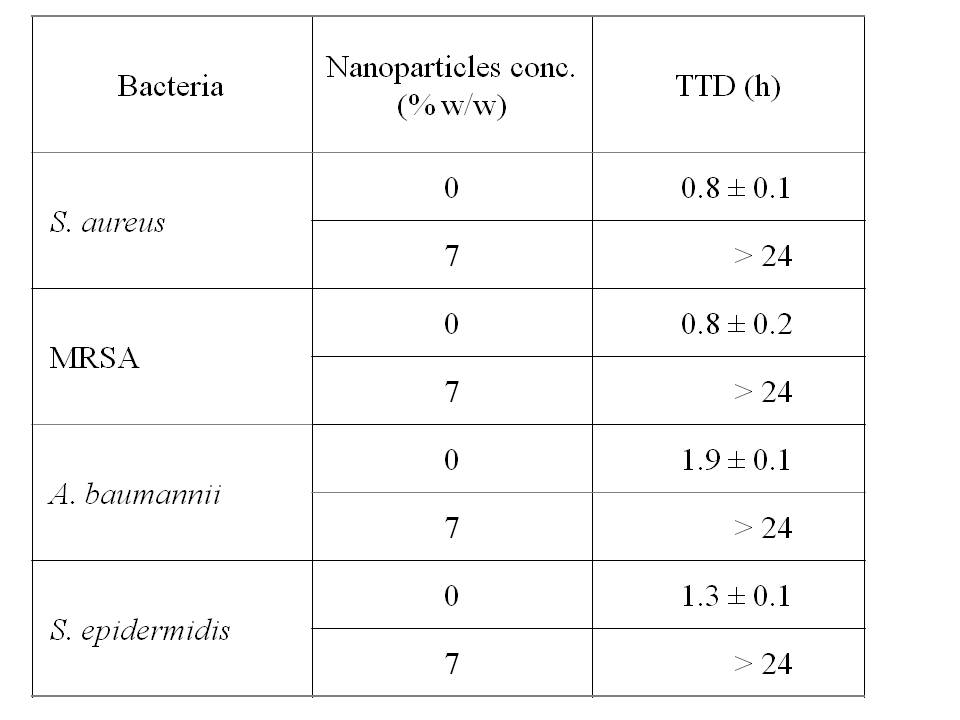The offset of infections after surgery is an extremely unwelcome occurrence both for the patient and health professionals; despite the widespread use of antibiotics, infections can develop in as many as 10% of cases. This probability is also expected to rise as antibiotics are gradually losing effectiveness as result of increasing bacterial resistance, consequently novel antimicrobial approaches are required to retain our ability to fight and prevent infections. Parabens are hydrophobic molecules whose antimicrobial activity is exploited in numerous cosmetics and pharmaceutical products. We prepared propylparaben nanoparticles[1] that exhibit higher affinity for water than pure parabens resulting in superior antimicrobial activity than pure propylparaben in aqueous environments.
We embedded in poly-methyl-methacrylate (PMMA) bone cement these organic nanoparticles to conferred antimicrobial against common causes of post-orthopaedic surgery infections such as: Staphylococcus aureus, MRSA, S. epidermidis and Acinetobacter baumannii.
The antimicrobial activity of PMMA bone cement samples containing paraben nanoparticles was determined through the indirect method proposed by Berchet et al[2]. employing the (TTD). Cell concentrations lower than a certain threshold are not detectable through OD measurements, therefore, the lower the initial cell concentration the longer the time required to reach such cell numbers (TTD).
Bone cements containing increasing concentrations of antimicrobial compounds exhibited generally lower bacterial colonisation (longer time to detection) as can be seen in Table 1.

TDD about 10 hours longer than the control (0% w/w) are compatible with a reduction of 6 log10 assuming a doubling time of 30 min. Despite providing antimicrobial activity, in order to be a viable option, the organic nanoparticles must not induce negative effects on the other bone cements properties; for this reason, the cytotoxicity (against osteoblast cells cultured on the bone cement containing paraben nanoparticles assessed through the MTT) and compression strength of bone cements containing 7 % w/w of nanoparticles were determined. The results demonstrated that the nanoparticles did not have a detrimental effect on these two essential characteristics.
Despite the wide spread applications of parabens, some concerns were raised regarding their potential safety as concentrations in environmental samples, human blood, breast milk, and tissues of these compounds had been steadily growing. However, after many reviews and extensive research their use has been found safe.
Our results demonstrated that propylparaben nanoparticles are effective against a wide spectrum of bacteria, including antibiotic resistant strains found in orthopaedic infections; hence the use of these organic nanoparticles could offer not only a possible alternative to antibiotics but also solve some of the problems already associated with antibiotic resistance.
This work was supported by Arthritis Research UK (ARUK:18461).
References:
[1] Margulis-Goshen et al. J Colloid Interface Sci 2010;342:283-292
[2] Bechert et al. Nature Medicine 2000;6:1053-1056